Linda Rodriguez's Blog, page 12
September 2, 2013
Getting a Life on Writers Who Kill Today
I'm blogging on Writers Who Kill Today about the three full-time jobs writers are expected to do now and how that turns living a life into having a schedule. Come join in the discussion.
http://writerswhokill.blogspot.com/2013/09/getting-life.html
http://writerswhokill.blogspot.com/2013/09/getting-life.html
Published on September 02, 2013 10:37
August 29, 2013
Fiction on the Fringes and a Great Question
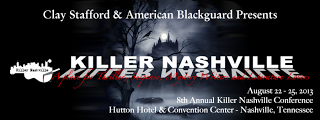
I spent much of last week on the way to, at, or on the way home from the mystery writers’ and readers’ conference, Killer Nashville. It was a great conference, but this isn’t my Killer Nashville post. I’ll post that one tomorrow over on The Stiletto Gang, one of the group blogs where I hang out. At the conferences, among other things, I was part of a panel called “Fiction on the Fringes: Writing about Other Cultures, Closed Societies, and Countercultures.” It was a terrific mix of writers, Barti Kirchner, Rabbi Ilene Schneider, Jill Yesko, and our moderator, Stacy Allen. We joked among ourselves that we were just the writers no one knew what to do with, so they came up with this panel idea.
But it was actually a great topic, and as a panel, we presented a variety of views—Barti who moves back and forth as a writer between her birth culture in India and her adopted culture in the United States, Ilene writing about a female rabbi from her experience as one of the first eight women rabbis ordained in this country, Jill writing about a counterculture hacker with oppositional-defiance disorder, and me writing about a mixed-blood Cherokee cop in a university setting.
The audience was completely attentive and receptive, and at the end audience members asked thoughtful questions that led to a fantastic discussion and exchange that continued out at the book-signing tables. One member of the audience, however, asked a question that’s been rumbling around in my mind ever since. She pointed out that the world she lived in was highly multicultural. She worked among people from many different backgrounds and cultures. She lived in a neighborhood with many people from diverse cultural backgrounds. Yet when she opened a book—unless it was written by someone from a cultural background other than the Western European mainstream—it was populated almost entirely with characters from the Western European mainstream. Why, she asked, couldn’t the novels she read be as diverse in their characters as the world around her was?
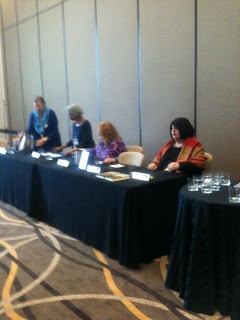 Others chimed in to agree. One audience member noted that a friend of hers who was a New York Times bestselling novelist routinely turned out one novel after another with all-white and middle-class casts of characters. Some people believed it was what publishers wanted. Others felt the writers who did this were just lazy. Some thought the majority of readers in the past preferred that homogenous line-up of characters, and publishers were simply slow in adjusting to new realities and readers who preferred a more realistic and diverse fictional world.
Others chimed in to agree. One audience member noted that a friend of hers who was a New York Times bestselling novelist routinely turned out one novel after another with all-white and middle-class casts of characters. Some people believed it was what publishers wanted. Others felt the writers who did this were just lazy. Some thought the majority of readers in the past preferred that homogenous line-up of characters, and publishers were simply slow in adjusting to new realities and readers who preferred a more realistic and diverse fictional world.Finally, that original audience member posed a new but related question. As a writer who wanted to build a world as varied as that she lived in, she asked, how could she know enough about these other cultures to be certain she was getting it right and not using stereotypes, which can be too often what writers resort to when writing about cultures with which they are not truly familiar?
At this point, I had to point out that, if a writer wants to write about a culture, perhaps s/he should be hanging around with people from that culture, even becoming friends with some of them. Not because it’s useful to the writing, but because, if you want to write about a culture, you should appreciate that culture and the people in it, and if you appreciate them, you’ll become friends with them. I always suggest that people look at Tony Hillerman as an example. He had lived around the Navajo and had friends among them long before he wrote about them, rather than the other way around of deciding to write about them and then heavy-handedly going among them wanting them to educate him about their culture. Even then, he checked and rechecked things with his Navajo friends and tried to be sure he was being both accurate and respectful.
There’s still a split in the opinion in Indian Country, having to do with the appropriation of culture, whether he should or should not have written those novels, but the Navajo tribe awarded him an award as a Special Friend of the Navajo Nation. I’ve written about that controversy and the reasoning on both sides here. http://lindarodriguezwrites.blogspot.com/2012/04/literary-mystery-noveliststony.html There’s also an interesting discussion in the comments on that topic.
This is a sensitive topic with many cultures, but in the U.S. it’s especially so with Native American nations because so many European-American folklorists and anthropologists swooped in and interviewed one person over a limited time, often taking things out of context (or just getting them dead wrong) in efforts to make their own academic reputations and careers. These misunderstandings and inaccuracies have fed stereotypes that still inflict damage even today. The tribes have become leery, with reason, of outsiders who come to them wanting to know the secrets of their cultures for their own purposes.
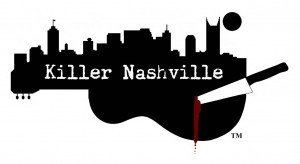 My questioner then pointed out that she did have friends among the culture she wanted to write about, but was unsure whether she should ask them for help. I suggested that, under those circumstances, she might want to talk to her friends to see if they would be willing to help her immerse herself more in the culture and/or warn her when she was veering away from the actuality of their world in her writing.
My questioner then pointed out that she did have friends among the culture she wanted to write about, but was unsure whether she should ask them for help. I suggested that, under those circumstances, she might want to talk to her friends to see if they would be willing to help her immerse herself more in the culture and/or warn her when she was veering away from the actuality of their world in her writing.It was a self-selected audience, of course—a group of people who chose to attend a panel called Fiction on the Fringes—but I was heartened at the deep interest in reading and writing novels that more truly reflect the rich diversity of cultures within this country. How do you feel about my questioner’s first question? Should the books we read reflect the diversity that surrounds us? Perhaps another reason they don’t is because some writers live in situations where they don’t see much of that diversity. (We often tend to be people who burrow into our caves and don’t see many others until we’re forced out, blinking, into the larger world to promote our books.) Certainly one of the advantages of attending conferences like Killer Nashville is the wide variety of panels that lead us to consider issues like this.
Published on August 29, 2013 14:14
August 20, 2013
EVERY HIDDEN FEAR Cover Reveal, Synopsis, and More
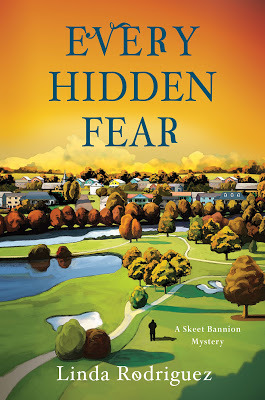
At the end of last week, I turned in the manuscript for my third Skeet Bannion mystery novel, Every Hidden Fear, which will be published May 6, 2014. My mind is still awhirl with the characters and events of that book. Yesterday, I received the cover for Every Hidden Fear, and I’m delighted with it, as I have been with each of the covers my publisher has given me for this series. So I wanted to share it with you.
Every Hidden Fear takes place in autumn just a few months after the events of the previous book, Every Broken Trust. Skeet Bannion tries to adjust to having her tough old grandmother living with her and her son, Brian, while Brian goes through the first pangs of unrequited love for his best friend, Angie Melvin, and Skeet’s aging delinquent father has also fallen disastrously in love.
Meanwhile, Ash Mowbray, a bad boy from the wrong side of the tracks, comes back to Brewster as a wealthy developer to polarize the town where he was once scorned, pushing plans to build a shopping mall on the outskirts of town that will destroy the courthouse-square businesses of Brewster. The town council’s split on his proposal, and feelings run high.
Mowbray makes things worse by threatening to reveal dirty secrets about prominent citizens and announcing he’s the real father of Angie’s quarterback boyfriend. It’s not long before Mowbray turns up murdered with his son as prime suspect. Angie and Brian turn to Skeet to find the murderer and save their friend.
From Brian’s classmate and his family to Skeet’s friends among the shop owners of the town square, too many people wanted Mowbray dead, and too many of them are people Skeet cares about. She must catch the murderer to spare her friends, even if the killer’s one of them.
In this book, the plots and subplots are driven by people’s hidden fears, hidden from others and often from themselves, and these hidden fears often lead them to take ruinous actions. Skeet’s own hidden fear is activated and intensified by the disasters of others in the story, leading her to impulsive acts that will continue to affect her life for some time to come.
My beta readers and I think this is the most emotional and personal Skeet Bannion book, so far. Fear of love and fear of loss lead Skeet to places and actions she’s sworn she’d never go or do. I’m still excited about it, and I hope you will be, too, when it’s published and you have the chance to read it.
As soon as my publisher gives the okay, I’ll post a sample chapter or two. Stay tuned!
Published on August 20, 2013 04:00
August 9, 2013
Project Needs Help—“Red Dust: A Mixed-Blood Dust Bowl Childhood”
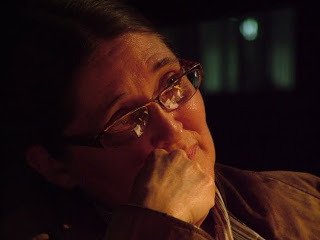
Allison Adelle Hedge Coke is an acclaimed poet ofHuron, Metis, Cherokee, Creek, Portuguese, French-Canadian, Irish, Scot, and English heritage whom I have featured before on this blog, but she is almost as well-known for her activism. Just check out all the activist projects listed in her bio below and realize that the listing is not comprehensive. Hedge Coke is another of the many writers of color who give back to the community selflessly. She was named Mentor of the Year in 2001 by the Wordcraft Circle of Native Writers and Storytellers. Of particular interest is the work she did with the sandhill cranes at the University of Nebraska Kearney. A poet and activist also heavily involved with labor and the Indigenous mound structures that network across the continent, her work reverberates with dreams, myths, history, and a true sense of life lived into something more sacred than its sometimes brutal or desecrating events.
Photo of Hedge Coke courtesy of the Maturin Cultural Center, Venezuela World Poetry Festival
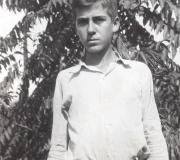
Hedge Coke is seeking funding for an ambitious project documenting through the life of her 91-year-old father the experiences of the many mixed-blood children who lived through the Dust Bowl and the Depression, usually in dire poverty and often working as migrant farmworkers. Hedge Coke’s father as a child moved around the heart of the Dust Bowl in Oklahoma, Colorado, New Mexico, and Texas picking other people’s cotton for a penny a pound. As Hedge Coke says of this project, “Though we have hoped to do this project for years, my father recognized that he was in school with speakers interviewed in the recent Ken Burns documentary and was saddened that Burns’ work did not explore the collective experience and focused more in the Anglo experience, solely. Obviously timely and potentially time limited, I am setting out to document my father’s primary history of the Great Depression and the Dust Bowl, while he is still able to contribute effectively.”
“Red Dust: a mixed-blood Dust Bowl childhood” is designed as book project and documentary film using Hedge Coke’s father’s narration of his memories on location as the narrative thread running through a project that will also seek other surviving mixed-blood voices from that time to add their stories to enrich the chronicle. For more details of this unique project and the opportunity to contribute, visit the USArtists website here. http://www.usaprojects.org/project/red_dust_a_mixed_blood_dust_bowl_childhood
Hedge Coke conceived and edited the valuable anthology, SING: Poetry from the Indigenous Americas, the first-ever anthology of Indigenous American poetry from all the Americas, North, Central, and South. This was an incredibly complex work that took six years and multiple translators to create. Its usefulness for scholars and lovers of poetry is a testament to the energy of her vision and the quality of her accomplishment. It leads me to expect great things from this new project, which is an exciting foray into an area that has long been missing the stories, experiences, and voices of the mixed-blood people who lived through that crucial time period.
BIO Allison Hedge Coke has been an invitational featured performer in international festivals in Medellin, Colombia, Venezuela, Argentina, Canada, and Jordan and foreign visiting professional in for Shandong University in Wei Hai, China. A 2010 Split This Rock Festival featured poet and 2011 Lannan Writing Resident (Marfa), she is a MacDowell Colony for Artists, Black Earth Institute Think Tank, Hawthornden Castle, Weymouth Center for the Arts and Humanities, and Center for Great Plains Research Fellow, is a former National Endowment for the Humanities Appointment Distinguished Visiting Professor at Hartwick College and formerly the Distinguished Paul W. Reynolds and Clarice Kingston Reynolds Endowed Chair in Poetry as an Associate Professor of Poetry and Writing at the University of Nebraska, Kearney where she directed the Reynolds Series and Sandhill Crane Migration Literary Retreat & Cranefest. She is core faculty in the University of Nebraska MFA Program and regular Visiting Faulty of the MFA Intensive Program at Naropa University. Hedge Coke is a regular keynote lecturer/performer and was the 2008 Paul Hanly Furfey Endowed Lecturer, in Boston. Her books include: Dog Road Woman, American Book Award, Coffee House Press, 1997; The Year of the Rat, chapbook, Grimes Press, 2000; Rock Ghost, Willow, Deer, AIROS Book-of-the-Month (memoir), University of Nebraska Press, 2004; Off-Season City Pipe, Wordcraft Writer of the Year for Poetry, Coffee House Press, 2005; Blood Run, Wordcraft Writer of the Year for Poetry, Salt Publications, UK 2006-US 2007; To Topos Ahani: Indigenous American Poetry, Journal Issue of the Year Award (ed.), Oregon State University, 2007; Effigies, (ed.), Salt Publications, 2009 and Sing, University of Arizona Press, 2011. She has edited five other volumes. Her long poem "The Year of the Rat" is currently being made into a ballet through collaboration with Brent Michael Davids, composer. Recent literary publications include Kenyon Review, Florida Review, Connecticut Review, Sentence Magazine, Prometeo Memories, Akashic Books, and Black Renaissance Noire. Recent photography publications include Connecticut Review, Future Earth Magazine and Digital Poetics. She has also authored a full-length play Icicles, numerous monologues, and has worked in theater, television, and film. Hedge Coke has been awarded several state and regional artistic and literary grants, fellowships, and tours; multiple excellence in teaching awards, including the King Chavez Parks Award; a Sioux Falls Mayor's Award for Literary Excellence; a National Mentor of the Year, a Wordcraft Circle of Native Writers and Storytellers Award; has served on several state, community, and national boards in the arts, a housing board, as a Delegate, in the United Nations Women in Peacemaking Conference, Joan B. Kroc Center for Peace and Justice, University of San Diego, and as a United Nations Presenting Speaker (with James Thomas Stevens, Mohawk Poet), Facilitator, and Speaker Nominator for the only Indigenous Literature Panel of the Indigenous Peoples Human Rights Forum. For many years she has worked with incarcerated and underserved Indigenous youth and youth of color mentorship programs and served as a court official in Indian youth advocacy and CASA. Hedge Coke has edited five additional collections and is editing two new book series of emerging Indigenous writing. Hedge Coke has continually taught various creative writing, literature, environmental writing, cultural philosophy, Native American Studies/Literature, education, and other courses for pre-school, K-12, college, university, and professional institutions since 1979. She came of age working fields, waters, and working in factories.
Published on August 09, 2013 20:59
July 24, 2013
Coming to the End
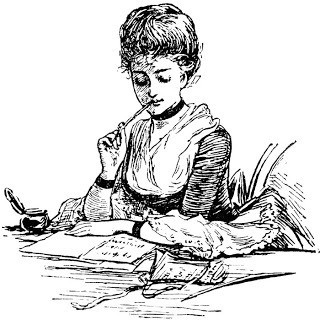
I’m finally coming to the end of my current WIP, Every Hidden Fear, Skeet Bannion #3. I’ve done that final work of figuring the details to make the final plot complications and twists and set up the outline of the final scenes of the book. This entailed the hard work of looking at what was missing and what I didn’t know, listing all those questions, and then writing and writing and writing and pacing around and talking out loud and tearing hair and writing and writing some more. Until it finally all came together. Now, I’m ready—really, enthusiastic—to write those last few scenes.
 Yesterday, I wouldn’t have been able to say the same thing. Yesterday, I was losing that fight against doubt that we all fight when we write novels. I wasn’t clear that I could finish it in any good way in the time I had to do it in or that what I’d written to get to that point was really any good. That’s the way this novel was written. Handed a deadline much earlier than expected. Frantically trying to catch up to where I should have been if I’d known I would need to start it much earlier. Feeling my way a footstep at a time through the pitch dark, never sure I wouldn’t walk myself right off a cliff. Telling myself I could do it again and again when I wasn’t sure I really could.
Yesterday, I wouldn’t have been able to say the same thing. Yesterday, I was losing that fight against doubt that we all fight when we write novels. I wasn’t clear that I could finish it in any good way in the time I had to do it in or that what I’d written to get to that point was really any good. That’s the way this novel was written. Handed a deadline much earlier than expected. Frantically trying to catch up to where I should have been if I’d known I would need to start it much earlier. Feeling my way a footstep at a time through the pitch dark, never sure I wouldn’t walk myself right off a cliff. Telling myself I could do it again and again when I wasn’t sure I really could.And yet, isn’t that always the way we write novels? Even when we have no deadlines—or very reasonable ones? Even when we think we know for sure just exactly how we’re going to write it? Don’t we usually hit a point where we suddenly wonder if all the work we’ve been doing isn’t just so much crap? Don’t we usually hit a point at least once where we’re just not sure if we can finish the damn thing?
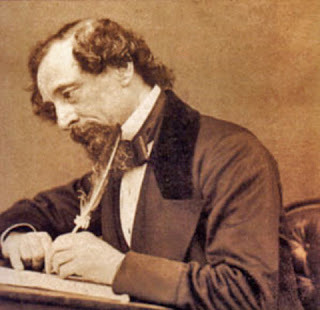 Writers are funny creatures. We have to believe that we have talent and something worth saying. We have to believe that we can create worlds and people and stories that others will want to read. But at the same time, if we’re actually going to be any good, we have to question everything we do, every idea, every character, every plot development—every word, when you get right down to it. We have to constantly believe that it isn’t good enough, or that we can make it better and must—or we’re likely to send self-indulgent, lazy work out into the world. So somehow we juggle that supreme self-belief and that pathological self-doubt (or at least stern self-questioning) in a way that allows us to bring forth new work that has never existed before. As with sausage-making, it really isn’t wise to look at this process very closely or for very long.
Writers are funny creatures. We have to believe that we have talent and something worth saying. We have to believe that we can create worlds and people and stories that others will want to read. But at the same time, if we’re actually going to be any good, we have to question everything we do, every idea, every character, every plot development—every word, when you get right down to it. We have to constantly believe that it isn’t good enough, or that we can make it better and must—or we’re likely to send self-indulgent, lazy work out into the world. So somehow we juggle that supreme self-belief and that pathological self-doubt (or at least stern self-questioning) in a way that allows us to bring forth new work that has never existed before. As with sausage-making, it really isn’t wise to look at this process very closely or for very long. So, tonight, ebullient, I’m sure that I’ll finish these last few scenes and that, with some judicious editing, this will be a good book. I will probably rescind that decision when I sit down to begin revisions, once more under the gun in ridiculous fashion. I will probably tear hair and cry and doubt that I can actually make this sow’s ear into a silk purse of a book. But that’s the schizoid process of writing. I know that. Most writers do. We fool ourselves into thinking we can do it, only to find that, by Jove!, we actually did do it! It’s no
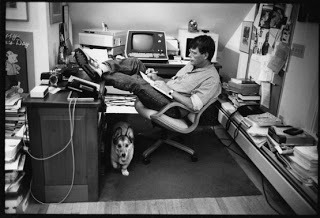 wonder so many have had drinking and drug problems and that suicide is an occupational hazard. What is surprising is how many times over the years so many of us manage to survive this screwy process and bring forth yet again another book—not the work of genius we’d like to have produced, but a solid, sound, readable book.
wonder so many have had drinking and drug problems and that suicide is an occupational hazard. What is surprising is how many times over the years so many of us manage to survive this screwy process and bring forth yet again another book—not the work of genius we’d like to have produced, but a solid, sound, readable book.Here we go again, the brave and neurotic writers of books. We who are about to do the impossible salute you!
Published on July 24, 2013 21:31
July 12, 2013
Remembering Pearl Buck
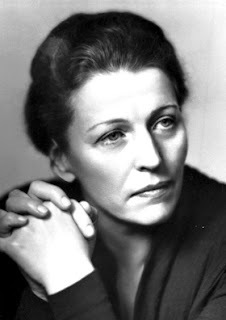
Pearl Buck is one of those once-great and now-forgotten authors who’s getting a new lease on life through the influence of Oprah Winfrey. In late 2004, Winfrey selected Buck’s The Good Earth for Oprah’s Book Club. Simon & Schuster's Washington Square Press printed 750,000 copies of a new trade paperback version of the book. Most of Buck’s novels had fallen out of favor with critics and fallen out of print. The discussion that ensued around this Oprah’s Book Club Selection brought several of Buck’s finest books back into print once more.
I know it’s fashionable in literary circles to criticize Oprah, but I believe she provides America, in general, and literary culture, in particular, a real service in encouraging reading and in bringing recognition to forgotten or overlooked works. Look at what happened to Buck. Even though Buck was the first American woman to receive the Nobel Prize for Literature, her bestselling and award-winning books, such as The Good Earth, Sons, A House Divided, Other Gods, China Sky, Dragon Seed, Pavilion of Women, Peony, The Big Wave, and Imperial Woman, had mostly been out of print. The gatekeepers of American literature, professors and critics, had pretty much consigned her books to the ash heap as “not literary enough” and “too popular” until Oprah pointed a spotlight back on her Pulitzer Prize-winning masterpiece, The Good Earth.

This is a recurring problem with modern American literary criticism, which is primarily based in academia. When writers originally considered literary and praised for their work become too popular or—heaven forbid!—make too much money from their books, they are soon scorned and relegated to the cultural ash heap of “not literary enough” and “too popular.” If they start out popular and sell well, those works may never even be considered literary—because how can they be if they’re so popular, right? In large part, this derives from a literary culture which has moved mostly to the university and where established writers and critics have their bills paid by other means than their writing. Another whole blog post right there! And in that category of another blog post to come, why is that male novelists can write one or two strong books and be forgiven for weak, meandering work after that for the sake of those powerful books, but too often women writers can write a number of strong books, yet if they should have even one weaker, less well-crafted book, all their work must then be dismissed?
Buck was a remarkable writer and remarkable person, who as a missionary’s child in China found in her backyard the mutilated remains of infant daughters abandoned to die and made them graves, as a teen volunteered to teach ex-brothel workers and sex slaves, as an adult novelist was accused in the U.S. of being a Communist while Maoist China accused her of being an imperialist. She thought, even as an adult in America, in Chinese first. English was always her second language. Even in her writing, she thought in Chinese and translated onto the page into simple, lucid, and powerful English. She worked tirelessly to improve the lot of minorities, women, and children, especially those with disabilities, in America and China. And wrote many books and shorter pieces, some weak and some extremely powerful. At the end of her long life, in thrall to a con man, she degenerated in a sad way from the person she had been for most of her life.
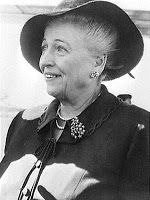
Buck always had the reader in mind when she wrote rather than the critics, so it may be a given that the critics would turn their backs on her. I love what Buck said in her Nobel acceptance speech. She pointed out that, in China, "the novelist did not have the task of creating art but of speaking to the people." “Like the Chinese novelist,” she said, "I have been taught to want to write for these people. If they are reading their magazines by the million, then I want my stories there rather than in magazines read only by a few.” Perhaps this is why her stories of people’s lives, especially women’s, are so enthralling. I know they have helped me through times of great physical and emotional pain.
Do you have authors whom you have loved and who have meant a lot to you who have fallen into disrepute or completely disappeared?
Published on July 12, 2013 10:18
July 8, 2013
Today at Writers Who Kill...
You'll find me today at the Writers Who Kill blog, talking about teaching writing at workshops and conferences and what makes a good student and helps in learning.
http://writerswhokill.blogspot.com/20...
http://writerswhokill.blogspot.com/20...
Published on July 08, 2013 09:11
July 5, 2013
The Morning After—4th of July Rant
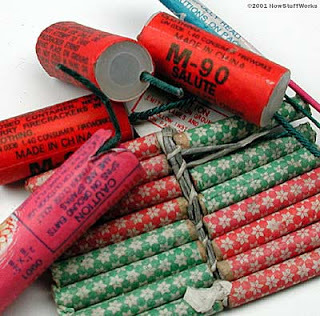
The fools next door, across the street, and all the way down the block on both sides were bursting cherry bombs, M80s, bottle rockets, and handguns until long after 1:30 a.m. This morning, they greeted 7:30 a.m. with a handful of cherry bombs and several strings of firecrackers, just to start the day off right. It’s a good thing I’m a believer in gun control and own no semi-automatic weapon, or I might surely have committed a grave crime indeed and left the world and my neighborhood a better place for it.
Kansas City is the second biggest fireworks market after San Antonio, although all unlicensed private fireworks displays in the city limits (and most of the suburbs) are illegal. Fourth of July here is absolutely miserable for dogs, cats, and sane people. I remember one year when my husband and I were returning from a trip late on Fourth of July and the city’s skyline looked like a war zone, clouded in the smoke of battle and explosions. Kansas City offers many legal, lavish, and free public fireworks displays, but folks will insist on spending hundreds of dollars at the fireworks stands set up just outside the city and suburban limits to blast away in their own front yards and the streets outside their homes.
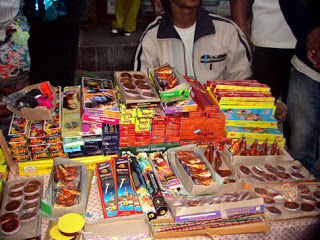
Every year homes burn, often to the ground, and people, often children, end up in the emergency room with major injuries from fireworks. But still, the fools buy them and set them off (while drunk) on every street in the large, sprawling metropolitan area, usually with a passel of kids running around among the minor explosives, leaving tons of fireworks trash all over the sidewalks and streets for someone else to clean up. Fourth of July is dreaded by firemen, police, EMTs, and sane people who’ve retained their hearing because of what the illegal and stupid use of fireworks brings.
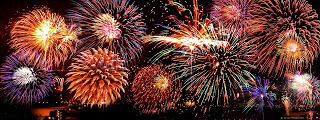 I love celebrations, and picnics, family gatherings, barbecues, cookouts, and block parties are wonderful ways to celebrate Independence Day. There are ceremonies that honor servicemen and others who have served their communities and ceremonies where speakers and politicians recount our history (albeit whitewashed) as a country, praise the wisdom and courage of our forefathers, and speak to the importance of honoring our country’s ideals today. And often there are spectacular, legal, public fireworks displays put on by professionals using all the safeguards that have been developed through the years. Why can’t people settle for one or all of these ways to celebrate and leave the illegal fireworks alone?
I love celebrations, and picnics, family gatherings, barbecues, cookouts, and block parties are wonderful ways to celebrate Independence Day. There are ceremonies that honor servicemen and others who have served their communities and ceremonies where speakers and politicians recount our history (albeit whitewashed) as a country, praise the wisdom and courage of our forefathers, and speak to the importance of honoring our country’s ideals today. And often there are spectacular, legal, public fireworks displays put on by professionals using all the safeguards that have been developed through the years. Why can’t people settle for one or all of these ways to celebrate and leave the illegal fireworks alone?And why, oh why must they start with the illegal fireworks in late June and run with them until the 8th or 10th of July? How are we celebrating the foundation of a nation of based on law when we break the law in front of our kids and encourage them to do the same? What kind of example are we setting when we do something like that? On the Fourth of July, we turn into a nation of scofflaws—and the most unpleasant of neighbors
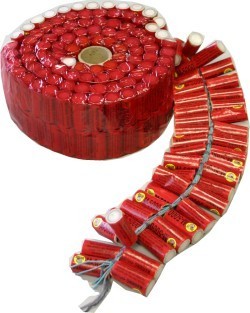 I know I’m not the only one who hates this idiocy. My Twitter and Facebook feeds last night were both full of friends all over the country complaining about the idiots near them who were blasting away and the damage this was doing to their hearing, their nerves, and their animals. The police can’t arrest a whole city, even when the citizens are openly breaking the law. It’s a logistical nightmare. Laws and the civil society that they make possible only work when most of the citizens of a place will abide by them. As we become more lawless in this way, doesn’t it make it easier for that slide into lawlessness as a society that everyone worries about?
I know I’m not the only one who hates this idiocy. My Twitter and Facebook feeds last night were both full of friends all over the country complaining about the idiots near them who were blasting away and the damage this was doing to their hearing, their nerves, and their animals. The police can’t arrest a whole city, even when the citizens are openly breaking the law. It’s a logistical nightmare. Laws and the civil society that they make possible only work when most of the citizens of a place will abide by them. As we become more lawless in this way, doesn’t it make it easier for that slide into lawlessness as a society that everyone worries about?The best Fourth of July I ever spent was in Oxford, England. No one over there even knows the day is different, and Britain certainly doesn’t celebrate the occasion of losing its top colony. Next year, I think I’m going to have to spend Fourth of July in some other country to avoid the cretins who are wrecking it in this one.
How do you feel about all the illegal private fireworks on Fourth of July?
Published on July 05, 2013 08:06
June 27, 2013
Interview Anxiety (at Stiletto Gang)
I'm at The Stiletto Gang today, talking about being sandbagged in a TV interview and tricked into a porn infomercial and how that's left me with "Interview Anxiety."
http://thestilettogang.blogspot.com/2...
http://thestilettogang.blogspot.com/2...
Published on June 27, 2013 21:50
June 25, 2013
Buenos Aires in Tumult--Guest Blog by Annamaria Alfieri
Buenos Aires in Tumult by Annamaria Alfieri
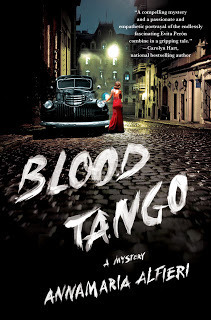
Blood Tango, my third South American historical mystery, takes place in Buenos Aires in 1945, during the most dramatic week in Argentine history. Argentines had been protesting in the streets of their capital for more than twenty months, and by October of that year the demonstrations were reaching new heights and threatening chaos. Think Turkey and Brazil during the past few weeks.
The country was being ruled by a military junta, and the populace both of the left and the right were demanding rule by constitutional law. Sound familiar?
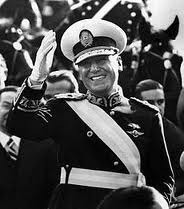 On the 8th of October Colonel Juan Domingo Perón celebrated his fiftieth birthday. He was the most powerful man in the country--its vice president, minister of war, and secretary of labor, as well as the puppet master pulling the strings of the president--General Edelmiro Farrell. As the most visible symbol of army rule, Perón was also the most hated of Argentines.
On the 8th of October Colonel Juan Domingo Perón celebrated his fiftieth birthday. He was the most powerful man in the country--its vice president, minister of war, and secretary of labor, as well as the puppet master pulling the strings of the president--General Edelmiro Farrell. As the most visible symbol of army rule, Perón was also the most hated of Argentines.On the day after his birthday, the generals deposed him in the hopes of quelling the mobs who are shouting for democracy in the plazas. But the demands for a return to the constitution continued apace.
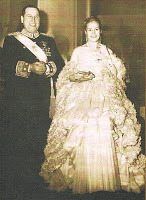 When, the junta went a step further and put Perón in jail, his supporters—the lowest level workers in the land—joined in with manifestations of their own, ratcheting up the noise and the stakes. The sheer numbers of Perón’s supporters were a game changer. Eventually hundreds of thousands of them took to the avenidasto make their own demand. They had only one. They wanted Perón back in power.
When, the junta went a step further and put Perón in jail, his supporters—the lowest level workers in the land—joined in with manifestations of their own, ratcheting up the noise and the stakes. The sheer numbers of Perón’s supporters were a game changer. Eventually hundreds of thousands of them took to the avenidasto make their own demand. They had only one. They wanted Perón back in power.Who were these men—individually powerless who combined to become an irresistible political force?
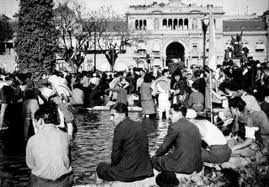 Until the late 19th and early 20thcenturies, the citizens of Buenos Aires had almost nothing in common with the people living in the rest of Argentina. The porteños (people of the port) were white—the original Spaniards, more recently joined by Europeans of all sorts who streamed into BA, much as they did into New York or Boston. They built a city very like the ones they had left behind across the ocean. They sold the beef raised out on the Pampas back to Europe, notable to England, and they shopped it on the hoof.
Until the late 19th and early 20thcenturies, the citizens of Buenos Aires had almost nothing in common with the people living in the rest of Argentina. The porteños (people of the port) were white—the original Spaniards, more recently joined by Europeans of all sorts who streamed into BA, much as they did into New York or Boston. They built a city very like the ones they had left behind across the ocean. They sold the beef raised out on the Pampas back to Europe, notable to England, and they shopped it on the hoof.The invention of refrigeration changed all that. Meat could be shipped already packaged. Slaughter houses (owned by Brits and Americans) were built next to the stockyards south of Buenos Aires and staffed with South American Indian men who poured into the city from the plains in search of jobs.
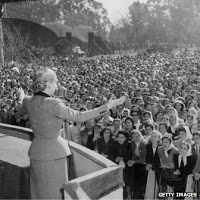
The oligarchic upper classes of the “Paris of the South” bought their labor cheap and ignored their needs, thereby creating fertile ground for the ambitious Colonel Perón. As secretary of labor, he had taken up the workers’ cause and made sure of their allegiance by enforcing statutory wage raises, vacations, and health insurance.
The low level workers owed all their gains to Perón, and when their man was sent to jail, they decided that if the upper classes could demonstrate for their rights, so could they. A week after Perón said farewell to his powerful position, they showed up by their hundreds of thousands to demand his return. Blood Tango is set against this background, and the story of Perón’s fall and struggle to return to power constitutes a subplot that reads like a political thriller.
 The fictitious murder plot involves the stabbing of an Evita lookalike. The people in power fear that Evita Duarte, a very popular soap opera actress who is Perón’s mistress, will stir up trouble among the poorest citizens of Buenos Aires. Many people might have wanted to kill Evita to keep her from filling such a role. Blood Tango takes up the question through the killing of a girl who could have been mistaken for Evita. Was the crime one of politics or passion?
The fictitious murder plot involves the stabbing of an Evita lookalike. The people in power fear that Evita Duarte, a very popular soap opera actress who is Perón’s mistress, will stir up trouble among the poorest citizens of Buenos Aires. Many people might have wanted to kill Evita to keep her from filling such a role. Blood Tango takes up the question through the killing of a girl who could have been mistaken for Evita. Was the crime one of politics or passion? The book launches this week. You can read more about it at www.annaamariaalfieri.com
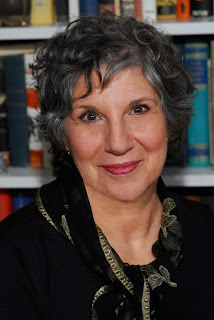
Published on June 25, 2013 09:08



